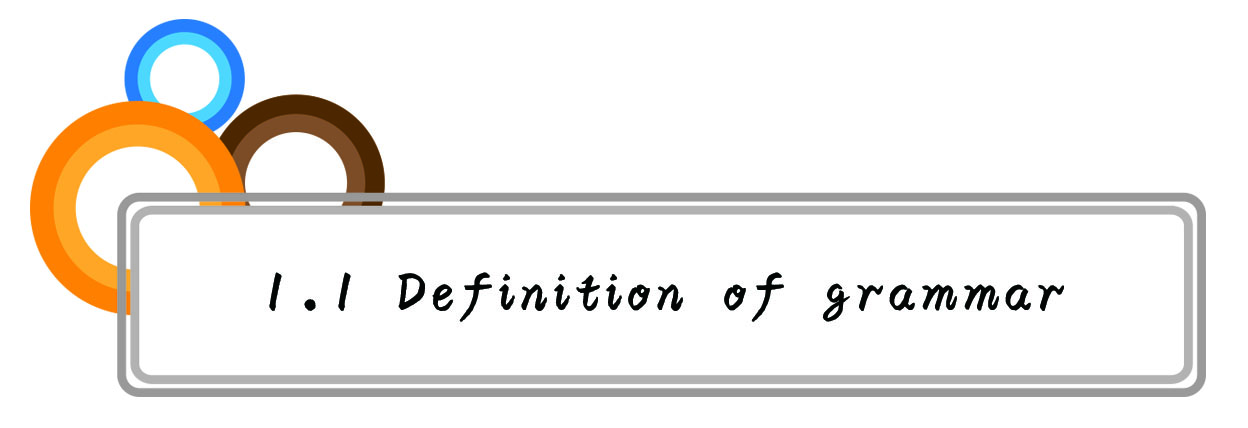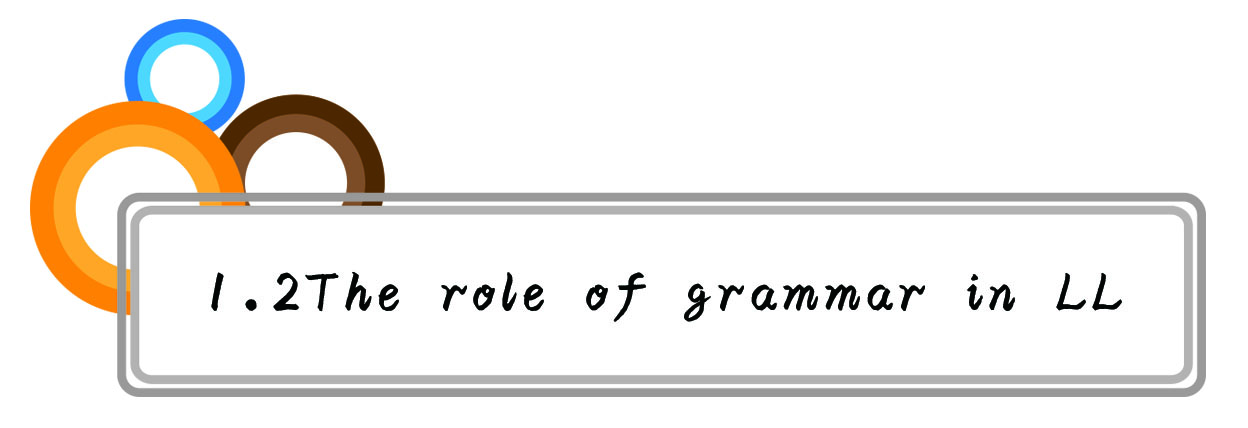


Grammar is a description of the structure of a language and the way in which linguistic units such as words and phrases are combined to produce sentences in the language.

Acquiring the grammatical system of the target language is of central importance, because an inadequate knowledge of grammar would severely constrain linguistic creativity and limit the capacity for communication. It is a means to an end, a facilitator, a support system to communication.

Grammar + Context = Communicative functions of the language in use.
Function means using language for particular purposes.
As an English teacher, he is supposed to teach an English lesson that combines grammar with topics and functional items. So the following elements and their relations should be focused when we teach grammar.

Fig 9-1: Elements of Grammar Teaching


(1) Deductive approach
In the deductive classroom, the teacher gives a grammatical explanation or rule followed by a set of exercises designed to clarify the grammatical point and help the learners master the point. In deductive teaching, you work from principles to examples.
(2) Inductive approach
In inductive teaching, you present the learners with samples of language and through a process of guided discovery, get them to work out the principle or rule for themselves.
(3) Consciousness-raising
In teaching, techniques that encourage learners to pay attention to language form in the belief that an awareness of form will contribute indirectly to language acquisition. Techniques include having Ss infer grammatical rules from examples, compare differences between two or more different ways of saying something, observe differences between a learner’s use of a grammar item and its use by native speakers. A consciousness-raising approach is contrasted with traditional approaches to the teaching of grammar (e.g. drilling, sentence practice, sentence combining), in which the goal is to establish a rule or instil a grammatical pattern directly.

(1)Integrate both inductive and deductive methods into your teaching. Which is better? It depends on the grammar point being taught. In fact, the deductive and inductive approaches are not mutually exclusive, and most teachers probably deploy both in their teaching.
(2)Use tasks that make clear the relationship between grammatical form and communicative function. So to present the grammar in a context that makes clear the relationship between them avoiding teaching grammar as an abstract system.
(3)Focus on the development procedural rather than declarative knowledge. Declarative knowledge (also factual knowledge) is information that consists of consciously known facts, concepts or ideas that can be stored as propositions. Procedural knowledge is knowledge concerning things we know how to do but which are not consciously known, such as “how to ride a bicycle”. Procedural knowledge is acquired gradually through practice, and underlies the learning of skills.
(4)Concerning about two factors:
● The E-Factor: Efficiency =economy, ease, and efficacy. “Economy” means “the shorter the better”; “ease” means “the easier an activity is to set up, the better it is”; “efficacy” means “the least easy to evaluate”.
● The A-factor: Appropriacy. Factors to consider when determining appropriacy include: Ss’ age, level, interests, previous learning experience, cultural factors, educational context, available materials and resources, etc.

There are a number of practice activities for various English structures. They are laid out in sequence: from a very controlled and accuracy-oriented exercise at the beginning to a fluency activity giving opportunities for the free use of the grammar in context at the end.
Types of grammar practice: from accuracy to fluency (1)Awareness: after the learners have been introduced to the structure, they are given opportunities to encounter it within some kind of discourse, and do a task that focusses their attention on its form and /or meaning. (2)Controlled drills: learners produce examples of the structure: these examples are, however, predetermined by the teacher or textbook, and have to conform to very clear, closed-end cues. (3)Meaningful drill: again the responses are very controlled, but learners can make a limited choice of vocabulary. (4)Guided, meaningful practice: learners form sentences of their own according to a set patter, but exactly what vocabulary they use is up to them. (5)(Structure-based) free sentence composition: learners are provided with a visual or situational cue, and invited to compose their own responses; they are directed to use the structure. (6)(Structure-based) discourse composition: learners hold a discussion or write a passage according to a given task; they directed to use at least some examples of the structure within the discourse. Free discourse: as in Type 6, but the learners are given no specific direction to use the structure; however, the task situation is such that instances of it are likely to appear. |

Nunan, D. Practical English language Teaching: Grammar [M]. 北京:高等教育出版社,2007.
Nunan, D. Practical English language teaching [M]. Beijing: Tsinghua University Press, 2013: 153-172
Thornbury, S. How to teach grammar [M]. Pearson Education & World Affairs Press, 2003.
Ur, P. A Course in Language Teaching: Practice and Theory [M]. 北京:外研社,剑桥:剑桥大学出版社,2000.
Yule, G. Explaining English grammar [M].Oxford: Oxford University Press, 1998.

Q1: Do you agree that “knowing a rule was a guarantee that the rule could be used for communication”? Why or why not?
Q2: Which is better, deductive or inductive teaching method? Why?
Q3: How do you understand consciousness raising approach?
Q4: Why do we design activities in the order which is from accuracy to fluency?














